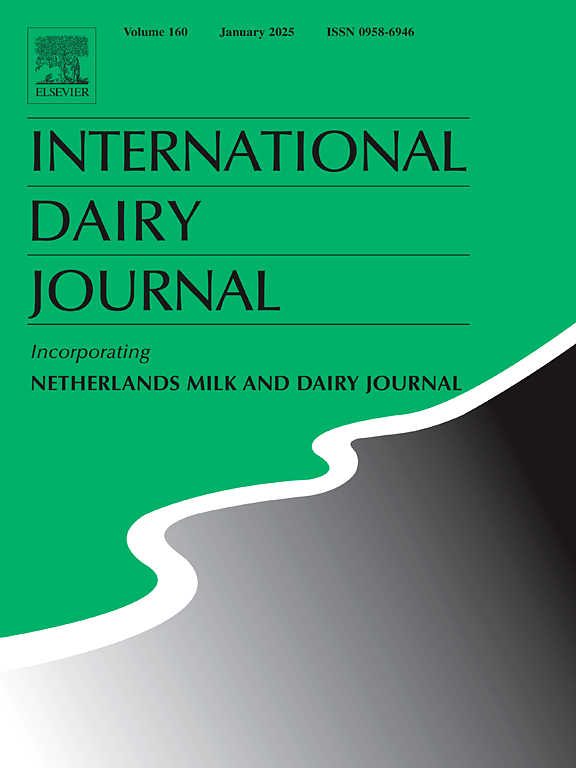通过γ-谷氨酰二肽的定向形成调节半硬奶酪的风味
IF 3.1
3区 农林科学
Q2 FOOD SCIENCE & TECHNOLOGY
引用次数: 0
摘要
研究发现,成熟高达奶酪的 kokumi 感觉是由γ-谷氨酰二肽诱发的,而γ-谷氨酰二肽是由γ-谷氨酰转移酶(GGT)催化谷氨酰胺和第二种氨基酸形成的。为了加速 kokumi 肽的生物合成,通过微过滤减少微生物数量来保留原奶中 GGT 的活性,并通过挤压将谷氨酰胺作为底物加入到半硬质奶酪的凝乳中。对所得样品的化学成分、硬度和融化性能进行了分析,结果与其他奶酪产品相当。在 12 周的成熟期内,γ-谷氨酰二肽的浓度持续上升。根据不同成熟度的商业奶酪样本,使用一个模型估算了延长成熟时间所对应的 kokumi 感知的增强。底物可用性和酶活性的结合使γ-谷氨酰基二肽的含量在 3 个月后就相当于 8 个月的成熟度。感官研究最终证实了感官特征的改善。本文章由计算机程序翻译,如有差异,请以英文原文为准。
Flavor tuning of semi-hard cheese by targeted formation of γ-glutamyl dipeptides
The kokumi sensation of mature Gouda cheese was found to be induced by γ-glutamyl dipeptides, which are formed from glutamine and a second amino acid catalyzed by γ-glutamyl transferase (GGT). With the aim of accelerating kokumi peptide biosynthesis, the GGT activity of raw milk was preserved by applying microfiltration for reduction of microbial count, and glutamine as substrate was incorporated into the curd of semi-hard cheese by extrusion. The resulting samples were analyzed regarding chemical composition, hardness, and melting behavior and were comparable to other cheese products. The concentration of γ-glutamyl dipeptides increased continuously over the 12-week ripening period. The enhancement in kokumi perception corresponding to prolonged ripening times was estimated using a model based on commercial cheese samples with different degrees of maturation. The combination of substrate availability and enzyme activity resulted in γ-glutamyl dipeptide levels equivalent to 8 months of ripening after only 3 months. The improved sensory profile was finally confirmed using sensory studies.
求助全文
通过发布文献求助,成功后即可免费获取论文全文。
去求助
来源期刊

International Dairy Journal
工程技术-食品科技
CiteScore
6.50
自引率
9.70%
发文量
200
审稿时长
49 days
期刊介绍:
The International Dairy Journal publishes significant advancements in dairy science and technology in the form of research articles and critical reviews that are of relevance to the broader international dairy community. Within this scope, research on the science and technology of milk and dairy products and the nutritional and health aspects of dairy foods are included; the journal pays particular attention to applied research and its interface with the dairy industry.
The journal''s coverage includes the following, where directly applicable to dairy science and technology:
• Chemistry and physico-chemical properties of milk constituents
• Microbiology, food safety, enzymology, biotechnology
• Processing and engineering
• Emulsion science, food structure, and texture
• Raw material quality and effect on relevant products
• Flavour and off-flavour development
• Technological functionality and applications of dairy ingredients
• Sensory and consumer sciences
• Nutrition and substantiation of human health implications of milk components or dairy products
International Dairy Journal does not publish papers related to milk production, animal health and other aspects of on-farm milk production unless there is a clear relationship to dairy technology, human health or final product quality.
 求助内容:
求助内容: 应助结果提醒方式:
应助结果提醒方式:


